Alex Ross gives a rundown of upcoming seasons at both the New York and Los Angeles Philharmonic Orchestras. There’s a fair amount of contemporary work on the bills from both coasts, though I can’t help feeling the “biggest” events have a somewhat buddy-buddy feel.
In case you’ve been getting in the habit of just clicking on the main page, taking a quick stare and then waltzing off hither and yon… Judith Lang Zaimont tells us what it’s like to get a little too close to the wrong kind of news, and the positive power of music even then… In case you’ve missed it, Christian Carey‘s trouble with eighth blackbird’s $50 entry fee for some lucky composer to get a performance has been racking up the comments, both very yea and very nay… Lawrence Dillon asks if being an eclectic composer is such a sin, really… Jay Batzner is taking on the challenge of writing an album’s worth of music in a month, and so far failing gloriously… Elodie Lauten wonders what’s going on with funding criteria these days… Paula Mlyn has been able to get back to tending our Naxos blog, and there’s all kinds of new news & interviews there just now…
In the wings: Tom Myron is itching to pen mucho new bon mots as soon as we get his blog upgraded [it’s coming Tom, hold yer horses!], James Holt has more great performer interviews from all over coming down the pipe, as does our pal Chris Becker, I’m putting together an interview with composer Michael Hersch in advance of an amazing premiere a couple weeks from now, CD reviews continue apace… Etc etc, blah de blah, this is just a gentle reminder to not forget to scroll, snoop, click on down past the main page once in a while, hear? And now, one last quick shout-out:
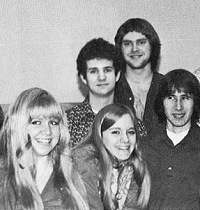 The photo is from the 1974 Pasco (WA) High School Swing Choir. The hairy Prince Valiant who’s lost all the buttons on his shirt is me (hey, we’re talking the 70s here, remember? I was in a rock band and had an image to uphold!). The other bright-eyed fellow in front of me, with the Art Garfunkel hair, is Bruce Neswick. Bruce and I were in classes together in our beloved podunk hometown, from 3rd or 4th grade all the way through high school, and have touched bases from college ’till now. Bruce was one of those kids who had music in his veins since birth; playing keyboards was as natural for him as breathing. It didn’t matter whether it was the Carpenters or Jean Langlais (which Bruce treated me to in an impromptu two-person visit back then, at the little tracker organ in the chapel at St. Martin’s College in Lacey, WA) — Bruce took one look and the music just flowed from his fingers.
The photo is from the 1974 Pasco (WA) High School Swing Choir. The hairy Prince Valiant who’s lost all the buttons on his shirt is me (hey, we’re talking the 70s here, remember? I was in a rock band and had an image to uphold!). The other bright-eyed fellow in front of me, with the Art Garfunkel hair, is Bruce Neswick. Bruce and I were in classes together in our beloved podunk hometown, from 3rd or 4th grade all the way through high school, and have touched bases from college ’till now. Bruce was one of those kids who had music in his veins since birth; playing keyboards was as natural for him as breathing. It didn’t matter whether it was the Carpenters or Jean Langlais (which Bruce treated me to in an impromptu two-person visit back then, at the little tracker organ in the chapel at St. Martin’s College in Lacey, WA) — Bruce took one look and the music just flowed from his fingers.
While my path wandered off into the world of composition, Bruce headed off into performance, specifically organ and liturgical music. Studies both here and in Europe followed, then teaching/performance/directing gigs everywhere from Buffalo, to Geneva, to the National Cathedral in Washington D.C. He’s made some wonderful recordings over the years, and is a truly phenomenal improviser at the organ.
But many of you regular S21 readers don’t have to travel so far to see and hear Bruce; the last year-and-a-half he’s been happily ensconced as Director of Music at the Cathedral of Saint John the Divine right there in New York City. An amazing journey and achievement for my old friend, one I hope only continues…
This weekend at U of Alabama Huntsville there was to have been a two-day symposium built around my second piano trio, ZONES. (The piece would be performed on Friday evening, paired with the Ravel Trio in a concert by Trio Appassionato.) But Friday afternoon, just as I was driving in from the airport, came the terrible murders on campus, shocking the city to its core.
I was emotionally dumbstruck by this tragedy – and the campus was closed after an hour-long lockdown.
What to do? … Concert organizer Dr. Royce Boyer and the performers decided to hold a truncated concert at a local church. I agreed to participate if it were possible for me to speak with the audience first — and to add a ‘musical offering’ to open the program, music very different from the dramatic works already scheduled.
After a rushed run-through of my five-minute Serenade with violinist Marta Szlubowska, I spoke to the audience about how the University’s fabric of cordiality had been so horribly torn apart four hours earlier, and how wrenching it was for us to compose ourselves to play that night — but also how key it is for a creative artist to take on one of our most essential roles, that of providing the emotional documents through which societies register moments of shared high emotion. And that such ‘emotional documents’ can — in addition to providing an outlet for extreme feeling — begin the communal process of regaining balance. What the University community needed, I believed, was a way to express great sadness and yet get beyond the shock by entering a ‘zone of serenity’ as a step towards understanding and acceptance.
Serenade turned out to be essential to this evening on this day. Over and over at the reception people spoke of how helpful this music was (and the words), and how powerful the piece was to them, hearing it at this moment. While they admired and responded to the trios, what they talked about as essential was Serenade.
It’s Sunday morning, and I’m back home – still in shock about the campus shootings, and the well of out-of-control emotion that prompted them. I will not write any music today.
Music has always come from two basic sources, and served two quite different masters — thought and emotion. The Western tradition, especially in its modern and contemporary permutations, has given the upper hand to thought, as if it was superior to feeling, and therefore inescapably deep. Hence our worship of Bach’s “pure” architectural lines and use of forms, and Schoenberg and his Second Viennese School and their satellites’ obsession with 12-note sets, have driven the wedge between the two even deeper . And that’s why some composers have claimed that that their music is music better than it sounds because it exists as “pure” thought on paper.
But most of the music by the 10 Bay Area-based composers on sfSoundSeries “Small Packages ” at the San Francisco Conservatory of Music’s handsome and warm-sounding Recital Hall 23 January , which revolved around a rare performance of Ligeti‘s 1970 Chamber Concerto, seemed to focus on feeling as not being divorced from thought, or vice versa. This wasn’t paper music. And one had the distinct sense, to paraphrase Dorothy, that we weren’t in Vienna any more.
Music always plays with time, and the 10 pieces here, which ranged from a little over 2 minutes to a whopping 6, teased one’s sense of duration as each filled its space with different kinds of weights, lines, and densities. The physical character of sound , which is of course a central modernist concern, also varied widely from piece to piece. Tom Dambly‘s Chamber Concerto, op. 3 (second movement) for 8 players, including the composer on trumpet, even had 12-note stretches, as well as a delirious sense of shifting tonal anchors. Nick Bacchetti‘s String Trio, which obviously evokes Schoenberg’s late masterpiece in this form, was expertly delivered by Graeme Jennings, violin, Alexa Beattie, viola, Monica Scott, cello, and Christopher Jones, conductor. Canner MEFE‘s witty Pen and Pencil Drawer, played here by Kyle Bruckman, oboe, and Matt Ingalls, clarinet, with its rapid glissandi, sounded like a virtuosic series of hockets/canons both elegant and forceful.
I have the utmost respect for Eighth Blackbird as musicians and new music advocates. In fact one of my fondest dreams as a composer would be to have them perform my chamber Sextet. But I was very disappointed to learn that the ensemble’s new Call for Scores requires composers to pay a $50 application fee to have their scores considered. While, as one of my colleagues put it, this may convince composers to be ‘a bit self-selective’ in their submissions, it’s also a handy way to self-fund the commission of a new work for the ensemble.
As much as I’d like to have Eighth Blackbird consider my work, I don’t want to participate in a process that feels exploitative.
Thoughts on application fees? The comments section is open!

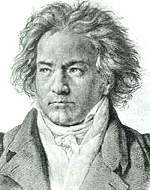 My guitarist friend in Mexico, Alexandra Cárdenas, passes along a request received from a German accordionist Eva Zöllner:
My guitarist friend in Mexico, Alexandra Cárdenas, passes along a request received from a German accordionist Eva Zöllner:
Dear friends, I need your help for a project I will present at RADAR festival in Mexico City in March. As part of a new version of Mauricio Kagel‘s LUDWIG VAN I am working on a collage of Beethoven fragments.
I’d like to ask you to contribute to this project by recording a Beethoven tune for me, preferably in an unusual manner (for example singing under the shower, whistling bits of the viola part of the Egmont Overture backwards, ….. whatever you feel like…).
I need your recordings (they can be very short, don’t even think about practising all the cello sonatas on your bass recorder… 😉 by email to eva (at) eva-zoellner.de until February 20.
I look forward to your ideas and I’d be happy to have many of you join this little project. Please don’t hesitate to contact me if you have any questions or forward this to some friends.
Many thanks, Eva
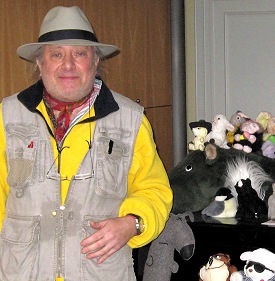 Pwyll ap Siôn is a composer and Senior Lecturer in music at Bangor University in Wales (UK). His strong interest in Minimalism (he’s written a book on Michael Nyman) led to his co-hosting of the first International Conference on Minimalist Music in 2007. He also made his way across the ocean for the second iteration of the conference, held last September in Kansas City, MO. Pwyll asked if S21 might like to print a few of his reactions and thoughts from the conference, and we said sure thing:
Pwyll ap Siôn is a composer and Senior Lecturer in music at Bangor University in Wales (UK). His strong interest in Minimalism (he’s written a book on Michael Nyman) led to his co-hosting of the first International Conference on Minimalist Music in 2007. He also made his way across the ocean for the second iteration of the conference, held last September in Kansas City, MO. Pwyll asked if S21 might like to print a few of his reactions and thoughts from the conference, and we said sure thing:
At the Second International Conference on Minimalist Music last September, hosted by the University of Missouri at Kansas City, part of the evening events led me to the Grace & Holy Trinity Cathedral to hear composer, performer and improviser Charlemagne Palestine. He is something of an enigma; when John Adams attended a rare performance in the 1980s, Palestine walked out after twenty minutes, leaving the audience baffled. Even those who have already seen him have no idea what to expect.
I enter the dim glow of the cathedral and notice two things: first, the sound of a drone — two notes, a fifth apart (a little like La Monte Young’s infamous Composition 1960 No. 7: two notes with the instruction ‘to be held for a long time’). The drone is low in dynamic but high in register, its reedy timbre adding a slight edge to the ambiance, but this is otherwise a rather inauspicious introduction. Secondly, there’s a merry gaggle of teddies and puppets neatly arranged on a table near the entrance, all of which appear to be wearing scarves or ribbons. I am told that this is de rigueur in the eccentric world of Palestine. But nothing quite prepares me for what follows.
We are politely informed that the performance has already begun despite the fact that the audience is milling around, chatting casually or ambling up and down the aisles. The atmosphere is relaxed, however, and we are told that the unpredictable Palestine is (literally) in high spirits, on his second (large) glass of cognac, and has extended an invitation to members of the audience to visit the organ loft situated at the rear of the cathedral. We have to take off our shoes to do this – a complicated process since it is almost completely dark at the back of the nave – and just as we are about to be ushered by an assistant up the staircase, there is a frisson of activity from above, and the man himself appears, wine glass in hand, wearing a panama hat and dressed in bright, colourful clothes.
He strides purposefully past us towards the altar, raising his voice to speak. Rather like the drone, which continues to sound in the background, his voice is high-pitched and nasal. He announces that he will be playing Schlingen-Blängen, which has not been performed (spoken ostentatiously) ‘in the United States of America’ for decades. But he’s rambling on incoherently, maybe the cognac’s starting to take effect, and I’m starting to doubt all the hype. This increases as he proceeds to produce a ringing sound by rubbing his finger around the wine glass while emitting a series of pitches in a childlike voice.
With the performance rapidly descending into banality Palestine stops singing, abruptly turns on his heels down the aisle and back up the organ loft. Seizing the opportunity the Belgian musicologist/critic Maarten Beirens and I follow him up the stairs. Oblivious to the fact that we’re there, he is entirely absorbed in his own sound world and starts to perform.
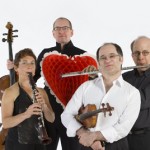 Those of you who are familiar with the contemporary arts scene in Seattle know that there are two organizations which have been dedicated to presenting new and interesting works from around the world for over 20-years: On the Boards and the Seattle Chamber Players. And those of you who are familiar with me know that I have a special love for Seattle and all the interesting musical and artistic projects that are embraced there. So, if you are in Seattle I would encourage you to check-out some upcoming SPC performances at OtB (especially since I can’t be there!).
Those of you who are familiar with the contemporary arts scene in Seattle know that there are two organizations which have been dedicated to presenting new and interesting works from around the world for over 20-years: On the Boards and the Seattle Chamber Players. And those of you who are familiar with me know that I have a special love for Seattle and all the interesting musical and artistic projects that are embraced there. So, if you are in Seattle I would encourage you to check-out some upcoming SPC performances at OtB (especially since I can’t be there!).
February 26-28: SCP will be performing five concerts in three days featuring new music from Italy, Hungary, Russia, Ukraine, Denmark, and Iceland. It is all part of their Icebreaker series and this set of concerts is subtitled “Love and War” – all the details can be found here.
And then…
March 4-6: SCP return to On the Boards for special collaboration with Pacific Musicworks in a theatrical production of “Songs of War I Have Seen” by German composer and director Heiner Goebbels. More information about these performances can be found here.
There is no question that the Seattle Chamber Players founder and flutist, Paul Taub, has been one of the most influential figures in Seattle’s contemporary music scene for a long time. I was able to get Paul on the phone for a few minutes back in June and I’m happy to finally share it with all of you now. Like most of my interviews with musicians, we talked about composer-performer relationships, but it’s also interesting to hear him speak a little about the Seattle Chamber Players’ dedication to contemporary music from Eastern Europe and countries of the former Soviet Union. You can download or listen to the audio here.
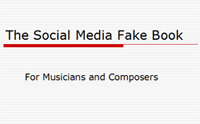 Met lots of really nice people at my little social media presentation for the Chamber Music America folks at St. Peter’s yesterday. As promised, here’s the slide deck I used. If there is anything you’d like more information about, send me an email and I’ll try to answer. My thanks to the extraordinarily well-organized CMA program director Susan Dadian for inviting me and for being the kind of gal who will quietly tell you that your fly is unzipped before you begin your talk.
Met lots of really nice people at my little social media presentation for the Chamber Music America folks at St. Peter’s yesterday. As promised, here’s the slide deck I used. If there is anything you’d like more information about, send me an email and I’ll try to answer. My thanks to the extraordinarily well-organized CMA program director Susan Dadian for inviting me and for being the kind of gal who will quietly tell you that your fly is unzipped before you begin your talk.
 The American Music Center’s NewMusicBox-meister Frank J. Oteri dropped by, with word of an upcoming gig of his own this Saturday:
The American Music Center’s NewMusicBox-meister Frank J. Oteri dropped by, with word of an upcoming gig of his own this Saturday:
“Just wanted to alert you folks that Tonally Perplexed, my trio devoted to improvisation with just noticeable differences (featuring moi on the custom built 6-octave ‘tonal plexus’ tuned to 205-tone equal temperament) will be performing on Saturday night at 7PM in Harlem for an art opening featuring new paintings by the wonderful Lisa Taliano (Chashama 461 Gallery, 461 West 126th St, between Amsterdam and Morningside). Since our last outing at the Cornelia Street Cafe, the group has taken a somewhat jazzier direction, no doubt urged on by the amazing bass playing of Ratzo Harris and the blues sensibility and sensitivity of Jeffrey Herman as well as my getting somewhat more comfortable on that beast of an instrument (which looks like a Lego assortment).”
Here are the full details. Meantime why not take a listen and a gander at Frank and crew, from a November 2008 outing?
[youtube]http://www.youtube.com/watch?v=UzUXP1rCJyE[/youtube]
